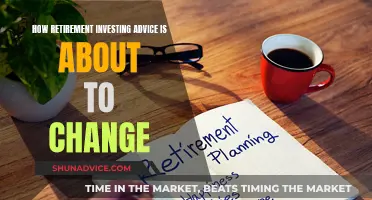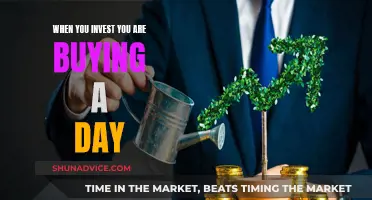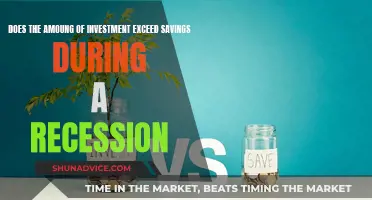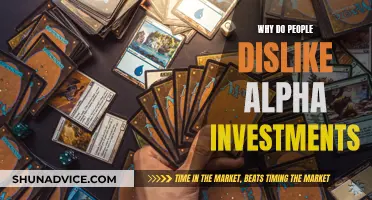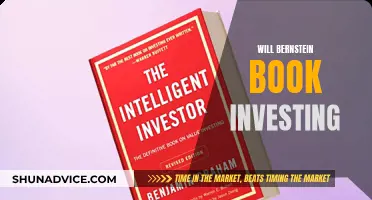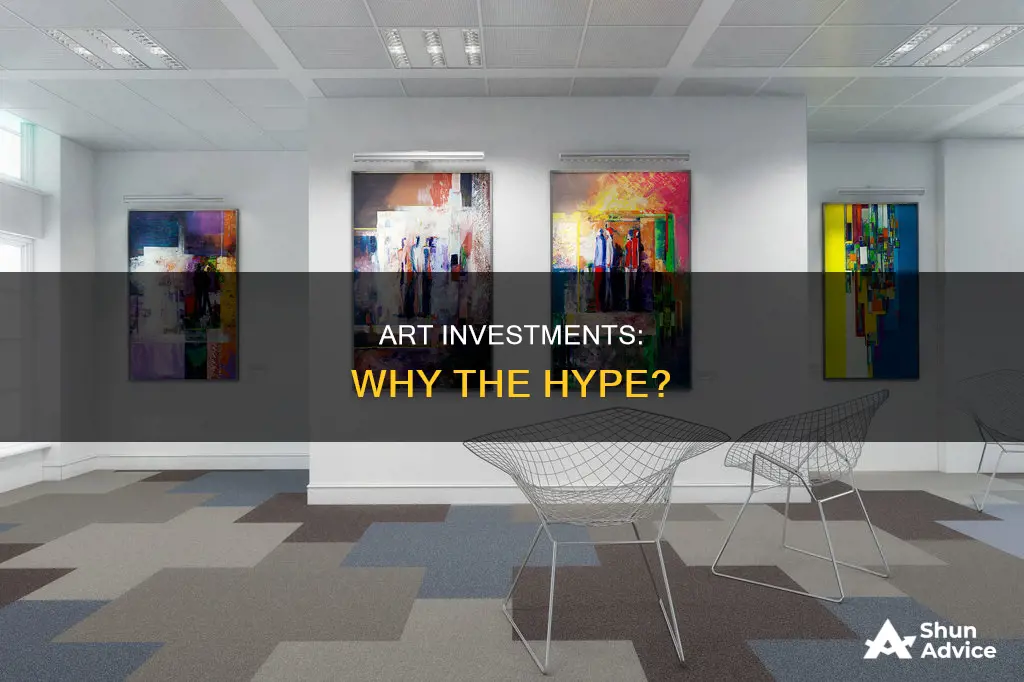
Investing in art has become an increasingly popular way to diversify one's portfolio. In 2021, the global art market was valued at $65.1 billion, up from $1.8 billion in 1997. Art is a high-risk and volatile asset, but its value is not directly correlated with stocks or bonds, making it an attractive option for diversification.
The primary reason people invest in art is for the visual and cognitive stimulation it provides, rather than the potential return on investment. Art collecting is not a new phenomenon, and luxury items have been collected for centuries, especially by the rich. Art is often seen as a status symbol, and its value can increase exponentially over time. For example, Leonardo da Vinci's Salvator Mundi sold for a record-breaking $450 million in 2017.
However, investing in art is not without its drawbacks. It can take a long time to sell a piece, transaction costs and fees are high, and the art market is highly volatile. Nonetheless, with the right piece, investors can make high returns over the long term.
What You'll Learn

Tax avoidance
Art is a unique asset that can be used for tax avoidance, and there are several ways to go about this. Firstly, art is considered a capital asset, and when sold for a profit, the capital gains tax rate can be lower than the rate for ordinary income. This is one of the main reasons why investing in art is attractive to high-net-worth individuals.
One strategy for tax avoidance is to use offshore entities such as offshore trusts to minimise taxes on art collections. These structures can help avoid estate and gift taxes while providing increased privacy and confidentiality. Another strategy is to purchase art and immediately send it to a freeport for storage, thereby avoiding sales and use taxes. However, taxes will be due as soon as the artwork leaves the freeport and is delivered elsewhere.
Additionally, certain structures, such as trusts or foundations, can be utilised to further reduce or defer taxes on art collections. For example, a Charitable Remainder Trust allows appreciated assets to be transferred into a trust before they are sold, generating an income over time and deferring capital gains tax. Similarly, a Charitable Lead Trust can be used to accelerate charitable deductions, reducing the impact of limitations on itemised deductions and offsetting up to 50% of the Adjusted Gross Income in any tax year.
Another way to avoid taxes is to borrow against an art collection, providing lenders with an opportunity to resell the debt. This strategy is particularly relevant given the $2 trillion valuation of privately held art and the $400 billion potential for the lending market. Lastly, art collectors can take advantage of the different use tax rates across US states by purchasing art in one state and immediately shipping it to another with a lower use tax rate.
Investing: A New National Pastime?
You may want to see also

Diversifying portfolios
Diversifying one's portfolio is a common reason why people invest in art. Here are some ways in which investing in art can help diversify an investment portfolio:
Low Correlation with Traditional Financial Markets
The art market often operates independently of traditional financial markets, making it a valuable tool for portfolio diversification. During economic downturns, art may not experience the same level of volatility as stocks. For example, in the first half of 2022, while stocks and bonds were declining, record prices were being set at art auctions. This low correlation with financial markets makes art a valuable hedge against inflation and economic crises.
Tangible Asset
Art is a tangible asset that offers visual enjoyment and aesthetic pleasure, which distinguishes it from stocks and bonds. This uniqueness is appealing to investors seeking diversification. Additionally, art is a long-lasting asset that can be passed down through generations, further enhancing its value.
Potential for High Returns
Artworks by renowned artists, known as "blue-chip" artists, and iconic pieces can appreciate significantly over time, offering the possibility of substantial profits. For example, Leonardo da Vinci's painting "Salvator Mundi" sold for a record-breaking $450 million in 2017.
Risk and Subjectivity
It is important to acknowledge that investing in art carries risks due to its subjective nature. The value of art can be influenced by changing trends, tastes, and artistic movements. Therefore, investing in art requires a good understanding of the market and a willingness to take on a certain level of risk.
Building a Diversified Art Portfolio
When building a diversified art portfolio, it is essential to define your investment goals and risk tolerance. Research different art genres, artists, and movements, and consider the historical performance of certain artists or types of art. Diversify your portfolio by including works from various genres, styles, and time periods. Avoid putting all your investments in a single artist or art movement. Balance your portfolio by including both established blue-chip artists and emerging artists with growth potential.
Seeking Investors for Your Farm?
You may want to see also

Emotional connection
Art can evoke strong feelings in people, and when an individual forms an emotional connection with a particular piece of art, they are more likely to ascribe value to it. This emotional attachment can lead to sub-optimal financial decisions, such as paying more than the market value for a work or holding onto a piece even when it is not a good investment.
The emotional value of art is deeply personal and individual. It involves visiting exhibitions, engaging with art professionals and artists, and forming a special connection with the artwork. This emotional connection can be so strong that people are willing to pay a premium for original pieces, as the rarity of a work of art is often what gives it value.
Additionally, the emotional appeal of art is not limited to the wealthy. With the influence of the internet and social media, the art market has become more accessible to a wider range of investors, including young and new collectors. Social media platforms like Instagram have played a significant role in connecting artists, art lovers, and collectors, facilitating sales and allowing collectors to discover works directly from artists.
While the financial returns on art investments can be unpredictable, the emotional returns are often immediate and deeply satisfying, making the purchase of art a unique and compelling investment choice.
The Roaring 20s: Investment Trends
You may want to see also

Status symbol
Art has long been associated with status, and for centuries, owning masterpieces has been a symbol of wealth, power, and prestige. Monarchs, aristocrats, and now celebrities and corporations have used art to showcase their affluence, cultural capital, and brand image.
In recent years, the art market has shifted towards the extravagant, with collectors seeking out "status symbol masterpieces" that serve as public declarations of their wealth. This phenomenon, known as "art flexing", has led to a competitive market for unique and expensive artworks from masters of contemporary art.
The traditional markers of wealth, such as large houses and luxury cars, are no longer sufficient for entry into elite social circles. Instead, billionaires and millionaires seek to possess something truly unique that cannot be bought by just anyone. This exclusivity fuels the demand for big art as a status symbol.
Art also serves as a form of cultural capital, demonstrating intellectual sophistication and taste. Owning a Picasso, for example, conveys that one is not only rich but also has an appreciation for beauty and culture. This is particularly true for individuals who have recently acquired wealth, as they seek to legitimize their status in elite circles.
Additionally, art is often viewed as a more enjoyable way of diversifying one's investment portfolio. It provides the thrill of the auction and the pleasure of displaying a masterpiece on one's wall rather than a stock certificate.
The desire to own and display art as a status symbol remains strong, despite the impact of mass production and consumerism. While reproductions and replicas may have decreased the exclusivity of owning original art, owning a masterpiece retains its allure as a symbol of social status and cultural capital.
Where People Invest: Tracking Trends
You may want to see also

Long-term investment
Art is a long-term investment. While the art market can be stable or show large returns on investment during boom times, it is one asset that can easily plummet in value during seasons of recession.
Art is a high-risk and potentially very volatile asset. The value of art is not directly correlated to other investment vehicles such as stocks or bonds. When incorporated properly, art can add strong diversification to someone's portfolio. However, from 1971 to 1996, the overall return on US paintings was only 4.6%/year.
Art is also a long-term investment in that it can take a long time from the decision to sell to the actual sale. In addition, art is an illiquid asset.
Art is a subjective and emotional investment. It is decorative and makes us feel good. It is therapeutic. It is incredible and without artists, our world would be bland.
Art is also an enjoyable way of diversifying a portfolio. It is one of the few tangible assets that also qualifies as a passion investment. There is more enjoyment in displaying art on your wall than in displaying stock certificates.
Art is a good long-term investment because it is not affected by the same factors that influence the stock market. Art market rate fluctuations are different from share market price swings, implying that art could be used to hedge against a recession or crisis.
Art is also a good long-term investment because it increases in value over time. In 2021, the global art market value was $65.1 billion, up from $1.8 billion in 1997. In 2018, sales on a global scale reached as much as $67.4 billion.
Art is a good long-term investment because it is resilient. In 2020, global sales dropped 22% since 2019. However, the art market resisted even when the sales market fell.
Who Watches Survival Shows?
You may want to see also


